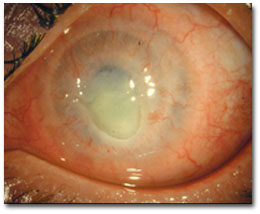| Essential topics/experience:
To have become familiar with the following: i. Infectious external disease: including viral, bacterial and chlamydial conjunctivitis. ii. The dry eye: including symptoms,
assessment of reduced tear production and tear film
iii. Allergic and atopic eye disease: recognition and management. iv. Corneal ulceration: from viral and bacterial disease; marginal keratitis. v. Complications of contact lens wear. vi. Corneal oedema, opacity and ectasia:
indications for corneal transplantation; standards of
vii. Episcleritis: recognition and management. viii. Anterior uveitis: including
classification, differential diagnosis, systemic associations,
ix. Liaison: with microbiology, immunology. Practical skills:
i. Conjunctival sampling and corneal scraping for microbiological investigation. ii. Pachometry for corneal thickness. iii. Keratometry and Placido’s disc. iv. Removal of corneal sutures. v. Retrieval of donor eyes for transplantation [5]. Background theory/principles:
i. Acanthamoeba keratitis and fungal keratitis. ii. Cicatricial conjunctival disease. iii. Punctal occlusion. iv. Corneal topography and specular microscopy. v. Corneal stromal dystrophies, interstitial keratitis. vi. Corneal biopsy: indications. vii. Chemical injury of the cornea and conjunctiva. viii. Therapeutic contact lenses and their complications. ix. Corneal transplantation: immunology of rejection. x. Limbal stem cell transplantation. xi. Autoimmune corneal and scleral disease including peripheral ulcerative keratitis. xii. Use of immunosuppresive therapies. xiii. Management of pterygium. xiv. Conjunctival and uveal tumours. xv. Aniridia and other dysgenesis. xvi. Fuch’s heterochromic cyclitis. |
|||
|
